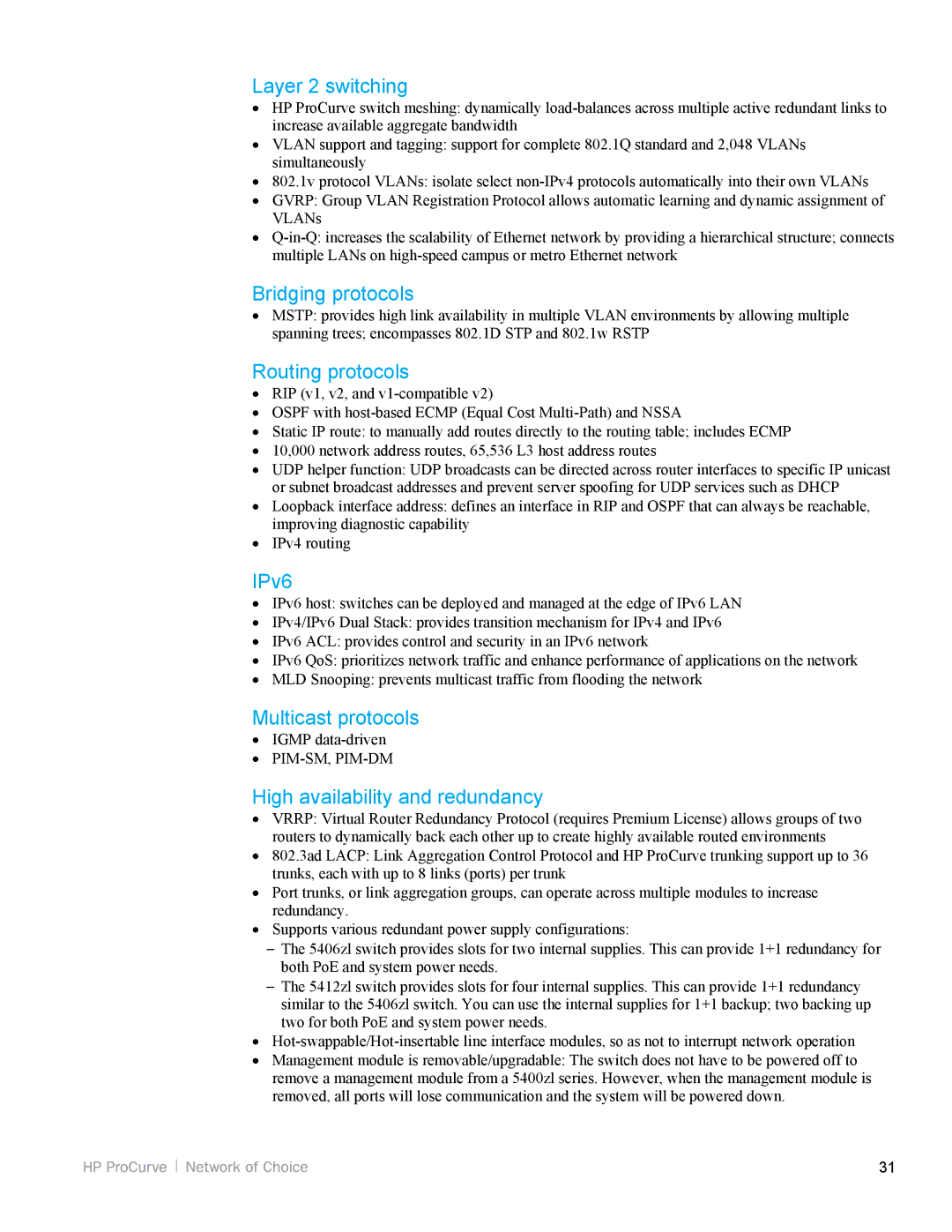Layer 2 switching
•HP ProCurve switch meshing: dynamically
•VLAN support and tagging: support for complete 802.1Q standard and 2,048 VLANs simultaneously
•802.1v protocol VLANs: isolate select
•GVRP: Group VLAN Registration Protocol allows automatic learning and dynamic assignment of VLANs
•
Bridging protocols
•MSTP: provides high link availability in multiple VLAN environments by allowing multiple spanning trees; encompasses 802.1D STP and 802.1w RSTP
Routing protocols
•RIP (v1, v2, and
•OSPF with
•Static IP route: to manually add routes directly to the routing table; includes ECMP
•10,000 network address routes, 65,536 L3 host address routes
•UDP helper function: UDP broadcasts can be directed across router interfaces to specific IP unicast or subnet broadcast addresses and prevent server spoofing for UDP services such as DHCP
•Loopback interface address: defines an interface in RIP and OSPF that can always be reachable, improving diagnostic capability
•IPv4 routing
IPv6
•IPv6 host: switches can be deployed and managed at the edge of IPv6 LAN
•IPv4/IPv6 Dual Stack: provides transition mechanism for IPv4 and IPv6
•IPv6 ACL: provides control and security in an IPv6 network
•IPv6 QoS: prioritizes network traffic and enhance performance of applications on the network
•MLD Snooping: prevents multicast traffic from flooding the network
Multicast protocols
•IGMP
•
High availability and redundancy
•VRRP: Virtual Router Redundancy Protocol (requires Premium License) allows groups of two routers to dynamically back each other up to create highly available routed environments
•802.3ad LACP: Link Aggregation Control Protocol and HP ProCurve trunking support up to 36 trunks, each with up to 8 links (ports) per trunk
•Port trunks, or link aggregation groups, can operate across multiple modules to increase redundancy.
•Supports various redundant power supply configurations:
–The 5406zl switch provides slots for two internal supplies. This can provide 1+1 redundancy for both PoE and system power needs.
–The 5412zl switch provides slots for four internal supplies. This can provide 1+1 redundancy similar to the 5406zl switch. You can use the internal supplies for 1+1 backup; two backing up two for both PoE and system power needs.
•
•Management module is removable/upgradable: The switch does not have to be powered off to remove a management module from a 5400zl series. However, when the management module is removed, all ports will lose communication and the system will be powered down.
31
